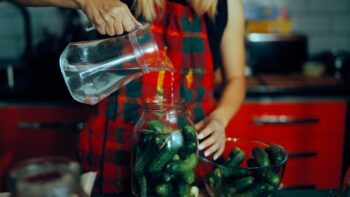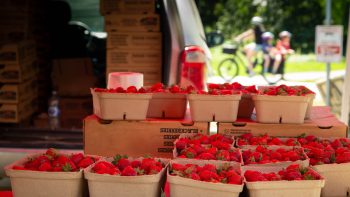Meal Planning for Vegan Diets on Food Stamps
Vegan diets consist of any foods that don’t come from animals. Most vegans eat a lot of vegetables, fruits, nuts, seeds and grains. If you would like to become a vegan or if you want to maintain your vegan lifestyle while on a food stamp budget, you might be wondering about the proper approach. You may find that the vegan foods you typically buy seem to be too expensive. And, it might look easier to buy cheaper foods that are less healthy. But, here are some ideas below to help you stick to your vegan eating habits, even though you may suddenly find yourself on a food stamp budget:
Get to Know Your Local Store Policies
If you want to make the most of your food stamps, then you should take note of the fact that a lot more of your local stores may accept them than you think. Food stamps are not just accepted by standard grocery stores. Many grocery stores that cater to healthy eaters also accept them.
While most stores clearly advertise that they accept food stamps, which may also be called SNAP or EBT cards, that isn’t true everywhere. There are a lot of stores that don’t advertise those policies openly. The Whole Foods Market grocery store chain is known for accepting food stamps, but not being obvious about that fact. But, Whole Foods Market isn’t the only chain that doesn’t openly advertise its food stamp policy. That’s why it will pay off for you in the long run if you begin by identifying exactly which places in your local area will take your food stamps.
Know That Some Plant Seeds Are Covered by Food Stamps
Since a large part of a vegan diet revolves around vegetables, herbs and spices, you will be happy to know that you can buy your own vegetable seeds on food stamps. Many vegetables grow quite well in pots inside, but if you have the space and the right climate, then you might even be able to grow a larger garden outside. Just remember that you have to get the seeds from grocery stores that accept food stamps. Otherwise, you will have to pay for the seeds out of your own pocket, but they might still be a wise investment.
If you do grow your own garden outside, then you will probably need fertilizer, but many of the foods you buy can produce scraps that serve as excellent fertilizer. For instance, banana peels can help plants to grow. You can also start an actual compost pile with all of your fruit and vegetable scraps, if you have the space.
Use Coupons and Discount Programs to Save Extra Money
If you have stores that you shop at all the time, then you may want to join any rewards programs that they may have and check their fliers and other advertised sales each week. There are also many different coupon websites that will tell you about local sales and let you print available coupons. Even if you don’t have a printer, try subscribing to the paper to receive coupons or going to the recycling center in your area and looking through the discarded newspapers for coupons. That can help to reduce any out-of-pocket expenses you would have had when grocery shopping.
Cook Filling Foods in Larger Batches When You Can
Certain popular vegan ingredients, such as many types of beans and rice, are quite filling and are also very cheap. You can use those foods to cook large batches of favorite dishes that will keep you well-fed for a while. You can either eat those dishes a few days in a row, or freeze a lot of leftovers for later. All you have to do is research some tasty recipes that use those inexpensive, filling ingredients.
Come Up with Frugal Food Substitutions
There are many great substitutes for traditional foods that might be expensive. For example, you might want to buy a lot of apples. They are quite cheap, especially when there is a sale going on. Then you can make your own apple butter instead of buying jelly or jam. Apples can also be used to make apple sauce, pie and other delicious dishes on a tight budget.
Buy Foods with Long Shelf Lives When They Are on Sale
Finally, try not to purchase foods with long shelf lives at full-price. Wait for sales and then stock up. Foods like cereal, pasta, rice, nuts and frozen fruits and vegetables can all be stored for quite a while. So can canned vegetables and fruits. Any money you save buying them on sale is money you won’t need to spend down the line. This means that you’ll be able to use more of your food stamp credits to buy other vegan foods that are a bit pricier.



